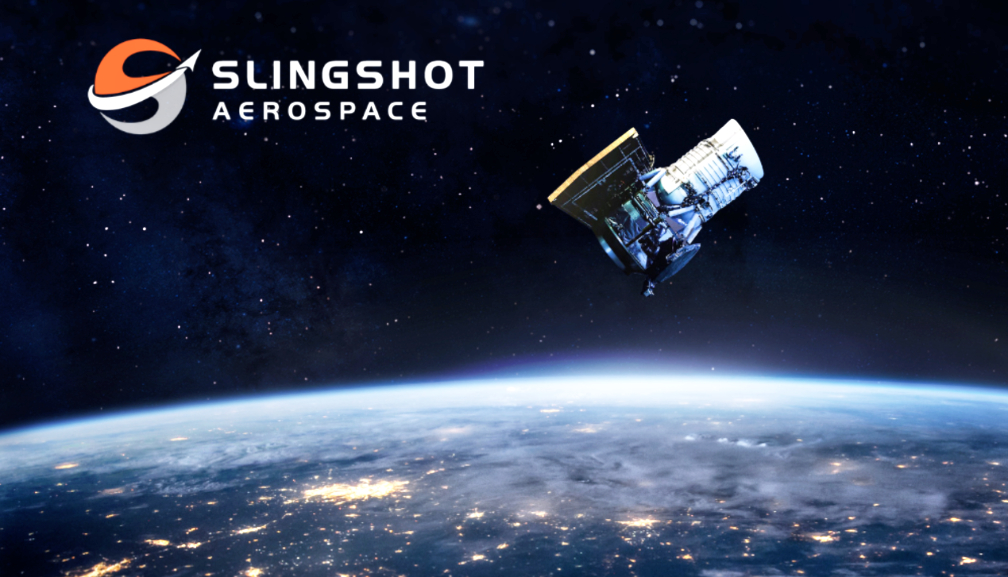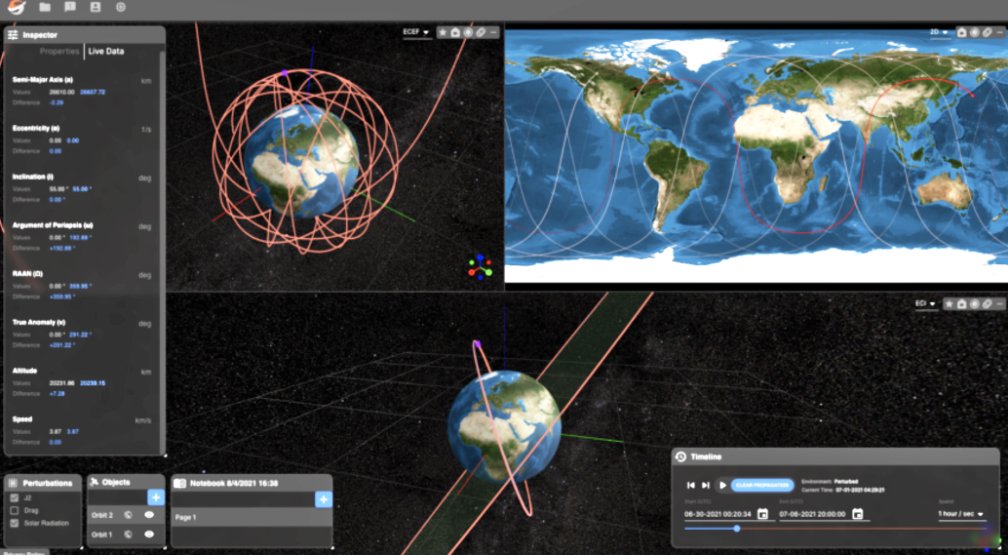Slingshot Aerospace, Inc. has been awarded a $25.2 million, 39-month contract from the U.S. Space Force’s (USSF) Space Systems Command (SSC) with strategic support from SpaceWERX.


The contract will facilitate delivery of two key Slingshot Aerospace products: the company’s Digital Space Twin, and the deployment of the Slingshot Laboratory training product for USSF. Funding was provided by Space Systems Command and SpaceWERX, the recently established venture arm of the Space Force as part of its Strategic Financing (STRATFI) program.

Slingshot Aerospace is developing a cutting-edge virtual space environment. The company’s Digital Space Twin reflects the current state of space at any given moment, enabling users to simulate various scenarios and identify the best approach to accomplishing missions. The product combines real-time mapping of objects in orbit and space weather data with physics based simulations to show users how planned missions will behave in the real space environment.
Slingshot Aerospace has spent the last two years developing the Digital Space Twin, which attracted the government’s attention. This contract will fund the expansion of Slingshot Aerospace’s Digital Space Twin to encompass the USSF missions and enhance their ability to analyze and respond to current and future threats. The Digital Space Twin will launch as a commercial product in advance of the final government deployment.
Examples of how the U.S. Space Force aims to leverage Digital Space Twin:
- Wargaming: Also known as scenario planning, wargaming is a critical aspect of maintaining national security. For example, the USSF will use Slingshot Aerospace’s Digital Space Twin to visualize potential nefarious acts that could occur in orbit. By being apprised of and understanding the impact of current threats, users can employ known data to plan and simulate responses and predict future adversary behavior in order to maintain national security.
- Mission Planning: Space Force Guardians operate satellites and other space objects from earth but the inherent complexity of the space environment makes it difficult to employ predictive modeling of scenarios in response to real world events. Using the Digital Space Twin, Guardians can simulate scenarios that are otherwise challenging to visualize. For example, Guardians can use the Digital Space Twin to map out the best course of action when an unknown object approaches a satellite of interest. The Digital Space Twin provides a real-world, hands-on environment to simulate mission execution so the Space Force can identify the most viable way to respond.
- Spacecraft and Constellation Design: Whenever a new space requirement, such as launching satellite constellations, is identified to meet a combatant command’s need, the USSF must consider various approaches. Guardians will model and evaluate the safest, fastest and most effective way to deploy the satellite constellation. The Digital Space Twin will enable users to quickly model various scenarios and identify the best path forward, taking into account safety, effectiveness and cost. For example, a typical government satellite can cost $1 billion and take several years to develop. By simulating the launch and the orbital environment using the Digital Space Twin, the government can identify the approach that eliminates the most risk and provides the greatest likelihood of success.
The Slingshot Aerospace Digital Space Twin will reduce costs, accelerate product development, optimize decision making and enhance operations for the Space Force. Slingshot Aerospace’s ultimate goal is to use its Digital Space Twin with government and commercial customers to promote space sustainability and help the USSF better protect society.
Slingshot Laboratory is a first-of-its-kind space simulation platform that teaches students and professionals the fundamentals and advanced concepts of astrodynamics. It offers an immersive and collaborative training environment that provides a physics-driven backdrop enabling the comprehension of complex astronautics. Using Slingshot Laboratory, students and professionals can govern their own virtual environments, empowering them to learn foundational theories that will lead to better and faster decision making in operational settings.
Slingshot Aerospace will develop and deploy pilot programs to four different U.S. Space Force (USSF) education organizations: Basic Military Training (BMT), National Security Space Institute (NSSI), the 319th Combat Training Squadron, and the 533rd Training Squadron.
Slingshot Aerospace is accelerating space sustainability with its suite of products including Slingshot Beacon, the industry’s first space collision avoidance collaboration and communications platform. The company is driven by its vision of accelerating space sustainability to create a safer, more connected world.
“The intent of the SpaceWERX STRATFI program is to scale technology development over the “valley of death” by capitalizing on the most promising emerging commercial solutions to deliver better capabilities to the warfighter, faster,” said Lt. Col. Walter “Rock” McMillan, Director, SpaceWERX. “Each year, the STRATFI program places its ‘big bets’ on the most innovative technologies that meet critical mission gaps. Slingshot’s space education and simulation products have garnered support from across the Space Force operational and acquisition community as we see tremendous value in the technology.”
“Space is a complex, rapidly evolving and unforgiving environment,” said Melanie Stricklan, Co-founder and CEO, Slingshot Aerospace. “Our Digital Space Twin is an unprecedented leap forward that provides a high-fidelity, physics-driven simulation of the actual, live space environment. This combined with the deployment of Slingshot Laboratory creates an extraordinarily powerful product suite that simply didn’t exist before. I couldn’t be more excited to know that our team and technology has the opportunity to vastly improve and optimize operational decision-making, increase overall readiness, and ultimately empower our Guardians and Airmen to out-innovate a determined adversary.
Slingshot Aerospace, Inc. is creating world-class space simulation and analytics products and solutions. The company brings the space domain into the digital environment and fuses data from different sources to provide a full, dynamic orbital picture. In doing so, Slingshot Aerospace customers can make decisions at the speed of relevance and achieve clarity in complex environments. Launched in 2017 and based in Austin, TX, and Los Angeles, CA, Slingshot Aerospace seeks to help government and commercial customers accelerate space sustainability to create a safer, more connected world.
